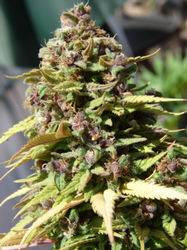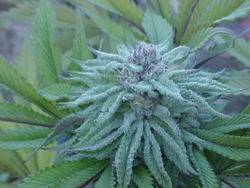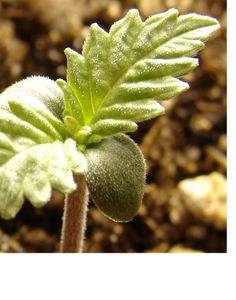OldPathBluSky
Member
Raco - Those pics are very very pretty 
OldPath

OldPath

southflorida said:i read in many threads and posts that nirvana seeds uses a male purple pheno of sk#1 to make their crosses of many of their strains....this is why many of them turn purple



strain_searcher said:
Ganja baba said:i want to try ganja pashes purple afghan , if it dont smell like typical purps , ie lavender ..
when i see people going mad for purps ,. no disrespect , but i instantly think they are light weights , specially when they say its really strong lol...
cause all the purple indicas and hybrids that i have smoked are far from potent , some have an amazing waking up effect , that is nice in its self , but not potent ....
any one else agree or am i a purple basher lol ....
Cannabis and Ancient History
The ancestors of Cannabis originated in Asia, possibly on the more gentle slopes of the Himalayas or the Altai Mountains to the north. The exact origin, obscured by Stone Age trails that cross the continent is not known.
We don't know when Cannabis and humanity first met. Given the growth habit of the plant and the curiosity of humanity, such a meeting was inevitable. In the plant world, Cannabis is a colonizer. It establishes new territory when running water or seed-eating animals carry seed to cleared and fertile soil open to the sun. Fertile soil, clear of competing plants, is rare and short-lived in nature, and is commonly caused by catastrophe such as flood or earthslide. Natural dissemination is slow and the plants tend to grow in thick stands by dropping seed about the spread of their branches.
During the Neolithic era, some 10,000 years ago, nomadic groups scavenged, hunted, fished, and gathered plants in an unending search for food. The search ended when they learned to plant the native grains (grasses) and developed agriculture. Agriculture requires a commitment to the land and grants a steady food supply which enables people to form permanent settlements. Cannabis and Neolithic bands probably came in contact often as plants invaded the fertile clearings — the campsites, roadsides, fields and garbage heaps — that occur wherever people live.
In 1926 Russian botanist summarized the observations of his comrade, Sinkaia, on the domestication of hemp by peasants of the Altai Mountains: "1. wild hemp; 2. spreading of hemp from wild centres of distribution into populated areas (formation of weedy hemp); 3. utilization of weedy hemp by the population; 4. cultivation of hemp." [24]
The plants which people learn to use help define aspects of their way of life, including perceptions of the world, health,, and the directions of their technologies and economies flow. The plants you are about to grow are descended from on of the ancient plants that made the transition to civilization possible.
The earliest cultural evidence of Cannabis comes from the oldest known Neolithic culture in China, the Yang-shao, which appeared along the Yellow River valley about 6,500 years ago.*
The clothes the people wore, the nets they fished and hunted with, and the ropes they used in their earliest machines were all made with the long, strong and durable fiber, hemp. This valuable fiber separates from the stem of Cannabis when the stem decays (rets).
In the early classics of the Chou dynasty, written over 3,000 years ago, mention is often made of "a prehistoric culture based on fishing and hunting, a culture without written language but which kept records by tying knots in ropes. Nets were used for fishing and hunting and the weaving of nets eventually developed into clothmaking."[8] These references may well be to the Yang-shao people.
As their culture advanced, these prehistoric people replaced their animal skins with hemp cloth. At first, hemp cloth was worn only by the more prosperous, but when silk became available, hemp clothed the masses.
People in China relied on Cannabis for many more products than fiber. Cannabis seeds were one of the grains of early China along with rice, barley, millet, and soybeans. The seeds were ground into meal, or roasted whole, or cooked in porridge. The ancient tombs of China had sacrificial vessels filled with hemp seed and other grains for the afterlife. From prehistoric times there is a continuous record of the importance of hemp seed for food until the first to second century B.C., when the seed had been replaced by more palatable cereal grains [7] (An interesting note from the Tung-kuan archives (28 A.D.) records that after a war-caused famine the people subsisted on "wild" Cannabis and soybean.[8])
The effects of Cannabis' resinous leaves and flowers did not go unnoticed. The Pên-ts'ao Ching, the oldest pharmacopoeia known, states that the fruits (flowering tops) of hemp, "if taken in excess will produce hallucinations" (literally "seeing devils"). The ancient medical work also says, "If taken over a long term, it makes one communicate with spirits and lightens one's body,"[9] Marijuana, with a powerful effects on the psyche, must have been just being formed. The Pên-ts'ao Ching, speaking for the legendary Emperor Shên-nung of about 2000 B.C., prescribes marijuana preparations for "malaria, beriberi, constipation, rheumatic pains, absent-mindedness, and female disorders."[15] Even the Cannabis root found its place in early medicine. Ground to form a paste, it was applied to relieve the pain of broken bones and surgery.
New uses were discovered for Cannabis as Chinese civilization progressed and developed new technologies. The ancient Chinese learned to mill, heat and then wedge-press Cannabis seeds to extract the valuable oil, a technique still used in the western world in the twentieth century. Pressed seeds yielded almost 20 percent oil by weight. Cannabis oil, much like linseed oil, could be used for cooking, to fuel lamps, for lubrication, and as a base in paint, varnish, and soap making. After oil extraction, the residue or "hemp cake" still contained about 10 percent oil and 30 percent protein, a nutritious feed for domesticated animals.
Another advancement came with the Chinese invention of paper. Hemp fibers recycled from old rags and fish nets made a paper so durable that some was recently found in graves in the Shensi province that predates 100 B.C.[9] Hemp paper is known for its longevity and resistance to tearing, and is presently used for paper money (Canada) and for fine Bibles.
The ancient Chinese learned to use virtually every part of the Cannabis plant: the root for medicine; the stem for textiles, rope and paper making; the leaves and flowers for intoxication and medicine; and the seeds for food and oil. Some of the products fell into disuse only to be rediscovered by other people at other times.
While the Chinese were building their hemp culture, the cotton cultures of Indian and the linen (flax) cultures of the Mediterranean began to learn of Cannabis through expanding trade and from wandering tribes of Aryans, Mongols, and Scythians who had bordered China since Neolithic times.
The Aryans (Indo-Persians) brought Cannabis culture to India nearly 4,000 years ago. They worshipped the spirits of plants and animals, and marijuana played an active role in their rituals. In China, with the strong influence of philosophic and moralistic religions, use of marijuana all but disappeared. But in India, the Aryan religion grew through oral tradition, until it was recorded in the four Vedas, compiled between 1400 and 1000 B.C. In that tradition, unlike the Chinese, marijuana was sacred, and the bhangas spirit was appealed to "for freedom of distress" and as a reliever of anxiety" (from the Atharva Veda).[1] A gift from the gods, according to Indian mythology, the magical Cannabis "lowered fevers, fostered sleep, relieved dysentry, and cured sundry other ills; it also stimulated appetite, prolonged life, quickened the mind, and improved judgement."[15]
The Scythians brought Cannabis to Europe via a northern route where remnants of their campsites, from the Altai Mountains to Germany, date back 2,800 years. Seafaring Europe never smoked marijuana extensively, but hemp fiber became a major crop in the history of almost every European country. Pollen analysis dates the cultivation of Cannabis to 400 B.C. in Norway; 150 A.D. in Sweden, and 400 A.D. in Germany and England.,[3] although it is believed the plant was cultivated in the British Isles several centuries earlier.[2] The Greeks and Romans used hemp for rope and sail but imported the fiber from Sicily and Gaul. And it has been said that "Caesar invaded Gaul in order to tie up the Roman Empire," all allusion to the Romans' need for hemp.
Marijuana, from its stronghold in India, moved westward through Persia, Assyria and Arabia by 500 A.D. With the rising power of Islam, marijuana flourished flourished in a popular form as hashish. In 1378, the Emir Soudon Sheikhouni tried to end the use of Indian hashish by destroying all such plants, and imprisoning all users (first removing their teeth for good measure). Yet in a few years marijuana consumption had increased.[1]
Islam had a strong influence on the use of marijuana in Africa. However, its use is so ingrained in some ancient cultures of the Zambezi Valley that its appearance clearly predated Islam.
Tribes from the Congo, East Africa, Lake Victoria, and South Africa smoke marijuana in ritual and in leisure. The ancient Riamba cult is still practiced in the Congo. According to the Riamba beliefs, marijuana is a god, protector from physical and spiritual harm. Throughout Africa treaties and business transactions are sealed in a puff of smoke from a yard-long pipe.[15]
With increased travel and trade, Cannabis seed was brought to all parts of the known worked by ships and caravans rigged with the fiber of its kind. And when the first settlers came to the Americas, they brought the seed with them.
* Cannabis is known to have been used in the Bylony culture of Central Europe (about 7,000 years ago).[184]
Bibliographical Notes
Historical
1. Aldrich, M. A. 1971. A Brief Legal History of Marijuana. Presented to the Western Institute of Drug Problems Marijuana Conference, Portland Oregon, August 7, 1971. 14 pp.
2. Frazier, J. 1974. The Marijuana Farmers, Hemp Cults and Cultures. 133 pp. Solar Age Press, New Orleans, La.
3. Godwin, H. 1967. Pollen Analytic Evidence for the Cultivation of Cannabis in England. Rev. Paleobotany Palnyol. 4:71-80.
4. Godwin, H. 1967. The Ancient Cultivation of Hemp. Antiquity 41:42-50, 137-138.
5. Jain, S., and Tarafder, C. 1970. Medicinal Plant Lore of the Santals Tribe in S.E. Asia. Econ. Botany 24:241-249.
6. Kamstra, J. 1974. Weed: Adventures of a Dope Smuggler. 267 pp. Harper and Row, New York.
7. Keng, Hsuan. 1974. Economic Plants of Ancient N. China as Mentioned in Shih Ching (Book of Poetry). Econ. Botany 28 (4): 391-410.
8. Li, Hui-Lin. 1974. An Archaeological and Historical Account of Cannabis in China. Econ. Botany 28 (4): 43a7-448.
9. Li, Hui-Lin. 1974. The Origin and Use of Cannabis in Eastern Asia: Linguistic Cultural Implications. Econ. Botany (3): 293-303.
10. Li, Hui-Lin. 1970. of Plants in S.E. Asia. Econ. Botany 24 (1): 9-10.
11. Musto, D. F. 1972. The Marijuana Tax Act of 1937. Arch. Gen. Psychiat. 26:101-107.
12. Rea, Mary-Alice F. 1975. Early Introduction of Economic Plants into New England. Econ. Botany 29 (4): 333-356.
13. Rubin, V., and Comitas, L. 1975. Ganja in Jamaica: A Medical Anthropological Study of Chronic Marijuana Use. 206 pp. Moulton/MacFarlane Pub. Scotch Plains, N.J.
14. Schultes, R. E. 1970. Random Thoughts and Queries on the Botany of Cannabis. In Joyce, C.R.E., and Curry, S. H., eds. The Botany and Chemistry of Cannabis. 241 pp. J. & A. Churchill, London. Pp. 11-38.
15. Schultes, R. E. 1967. Man and Marijuana. Nat. Hist. 82: 59-63, 80, 82.
16. Shakespeare, P. M. 1977. The Book of Pot. 96 pp. A and W Visual Library. New York.
24. 24. Davidan, G. G. 1972. Hemp. Bull. Apllied Bot., Gen., and Plant Breeding 48 (3): 9 pp. Lenigrad. (Russian)
Pharmacology
174. Agurell, S., et al. 1973. Quantitation of THC in Plasma from Cannabis Smokers. J. Pharmaceut. Pharmacol. 25: 554-558.
175. Agurell, S. and Nillson, J. L. G. 1972. The Chemistry and Biological Activity of Cannabis. Bull, Narc. 24 (4):2935-2937.
176. Agurell, S. 1970. Chemical and Pharmacological Studies of Cannabis. In Joyce and Curry (see note 14), pp. 175-191.
177. Christensen, H. D., et al. 1975. Activity of Delta-8- and Delta-9-THC and Related Compounds in the Mouse. Science 31: 165-167.
178. Davis, W. M. J. 1972. A Simple Method for the Preparation of Injectables of THC and Cannabis Extracts. J. Pharmaceut. Pharmacol. 24: 176.
179. Ederly, H., Grunfeld, Y., Ben-Zvi, Z., and Mechoulam, R. 1971. Structural Requirements of Cannabinoid Activity. Annals N.Y. Acad. Sci: 40-53.
180. Gill, E. W., and Paton, W. D. M. 1970. Pharmacological Experiments in vitro on the Active Principles of Cannabis. In Joyce and Curry (see note 14), pp. 165-173.
181. Gill, E. W., Paton, W. D. M., and Pertwee, R. G. 1970. Preliminary Experiments on Chemistry and Pharmacology of Cannabis. Nature 228: 134-136.
182. Haagen-Smit, A. J., et al. A Physiologically Active Principle from Cannabis sativa (Marijuana). Science 91 (2372): 602-603.
183. Hollister, L. E., and Gillespie, H. 1975. Interactions in Man of THC, II: CBN and CBD. Clin. Pharm. Therap. 18: 80-83.
184. Kabelik, J., Krejci, Z., and Santavy, F. 1960. Cannabis as a Medicant. Bull. Narc. 12 (3): 5-23.
185. Karniol, I. G., et al. 1975. Effects of THC and CBN in Man. Pharmacol. 13: 502-512.
186. Karniol, I. G., and Carlini, E. A. 1973. Pharmacological Interaction between CBD and THC. Psychopharmacologia 33: 53-70.
187. Lemberger, L., et al. 1971. THC: Metabolism and Disposition in Long-Term Marijuana Smokers. Science 173: 72-74.
188. Maugh, T. H. 1974. Marijuana: The Grass May No Longer Be Greener. Science 185: 683-685.
189. McCallum, N. K. 1975. The Effect of CBN on THC Clearance from the Blood. Experientia 31 (8): 957-958.
190. Olsen, J. L., et al. 1975. An Inhalation Aerosol of THC. J. Pharmaceut. Pharmacol. (Communications) 28: 86-97.
191. Paton, W. D. M. Pharmacology of Marijuana. 1975. Ann. Rev. Pharm. 15: 191-219.
192. Perez-Reyes, M., Timmons, M. C., Davis, K. H., and Wall, E. M. 1973. A Comparison of the Pharmacological Activity in Man of Intravenously Administered Delta-nine-THC, CBN, and CBD. Experientia 29: 1368-1369.
193. Powel, G., Salmon, M., and Bembry, T. H. 1941. The Active Principle of Marijuana. Science 93 (2422): 521-522.
194. Mikuriya, T. H. 1973. Marijuana: Medical Papers. 475 pp. Medi-Comp Press, Oakland, Calif.
195. Sallen, S. E., et al. 1975. Antiemetic Effect of THC in Patients Receiving Cancer Chemotherapy. New England Med. J. 293 (16): 795-798.
196. Segelman, A. B., and Sofia, R. D. 1973. Cannabis sativa L. (Marijuana), IV: Chemical Basis for Increased Potency Related to a Novel Method of Preparation. J. Pharm. Sci. 62 (12): 2044-2046.
197. Turner, C. E. 1974. Active Substances in Marijuana. Arch. de Invest. Medica 5 (1): 135-140.